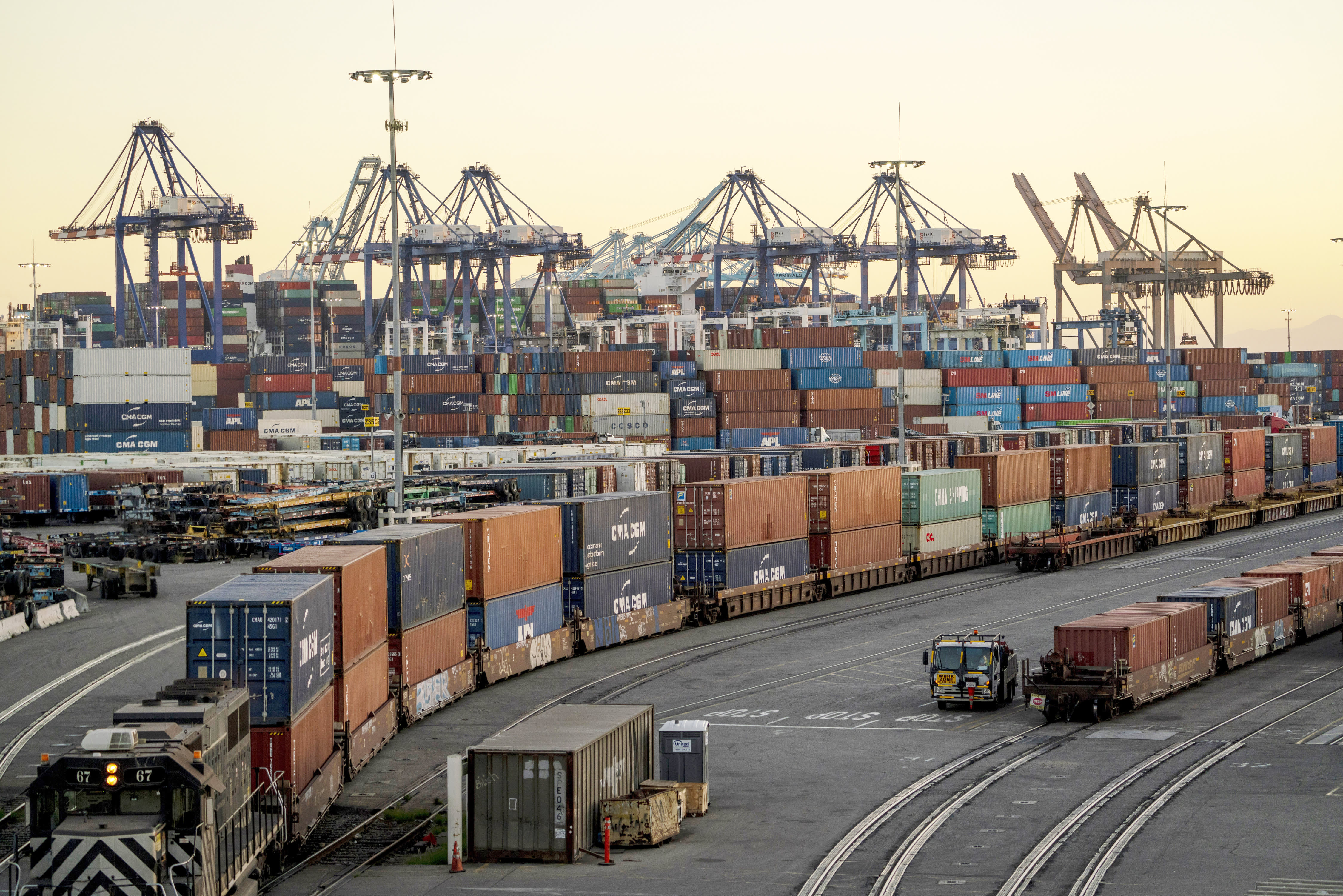Head of busiest U.S. port says imposing fines for lingering cargo was ‘a last resort’ but it’s starting to help

The Port of Los Angeles’ decision to impose fines for lingering cargo containers was “a last resort,” but it’s already showing signs of having the desired effect, Gene Seroka, the port’s executive director, told CNBC on Tuesday.
The policy, which kicked in Monday, was announced Oct. 25 by the Port of Los Angeles and the adjoining Port of Long Beach as part of an effort to ease congestion due to the Covid pandemic. Ocean carriers will be charged $100 per day for each truck-bound container that’s left for nine days or more. Fines for containers that will leave the facility by rail start accruing on their sixth day.
“We’ve tried diplomacy. We’ve tried collaboration, operations meetings all around, and nothing has moved the needle just yet,” Seroka said in a “Squawk Box” interview. “This is a last resort and one I didn’t want to have to take, but we’re starting to see movement.”
“Folks are coming to the table with these daily and twice-daily video meetings to try to figure out what their plans are — liner shippers, importers — and how we’re going to move this cargo away and get the others moving forward,” said Seroka, who has led North America’s busiest container port since 2014.
“We’ve asked them to work very closely with us. We’ve got 73 ships at anchor as of late night, and we’ve got to get these ships in and working. Productivity here at the port … continues to be at all-time highs,” Seroka said.
Shipping containers in the Port of Los Angeles in Los Angeles, California, U.S., on Wednesday, Oct. 13, 2021.
Kyle Grillot | Bloomberg | Getty Images
“It’s getting this product off the dock that is just so imperative,” he said. “We’ve tried almost every angle possible, and now this one has gotten some folks thinking a little bit more than they have in recent weeks and months.”
According to a Port of Los Angeles press release, roughly 40% of imported containers on marine terminals are idling there for at least nine days. That’s up from the pre-coronavirus average of four days for containers designated for trucks and two days for those headed to railroads.
Volumes at U.S. container ports rose during the coronavirus pandemic after an initial slump in early 2020, according to Department of Transportation data.
The surge in arriving cargo has challenged the Port of Los Angeles since last year. In December 2020, for example, Seroka warned on CNBC that the port was being strained, citing the pandemic-related shift in consumer spending to more goods away from services.
However, the public’s overall attention to supply chain bottlenecks has really intensified in recent months, and the Biden administration has ratcheted up efforts to address those issues, which have contributed to the inflationary pressures hitting the U.S. economy. Last month, a White House-backed initiative to run operations 24/7 at the ports of Los Angeles and Long Beach was rolled out.
In a “Mad Money” interview Monday, Commerce Secretary Gina Raimondo told CNBC’s Jim Cramer the administration is doing “everything in our power” to alleviate port congestion in conjunction with the business community. “Fundamentally, the private sector has to solve this, and we’re working in partnership with them,” she said. “We’re seeing progress.”




